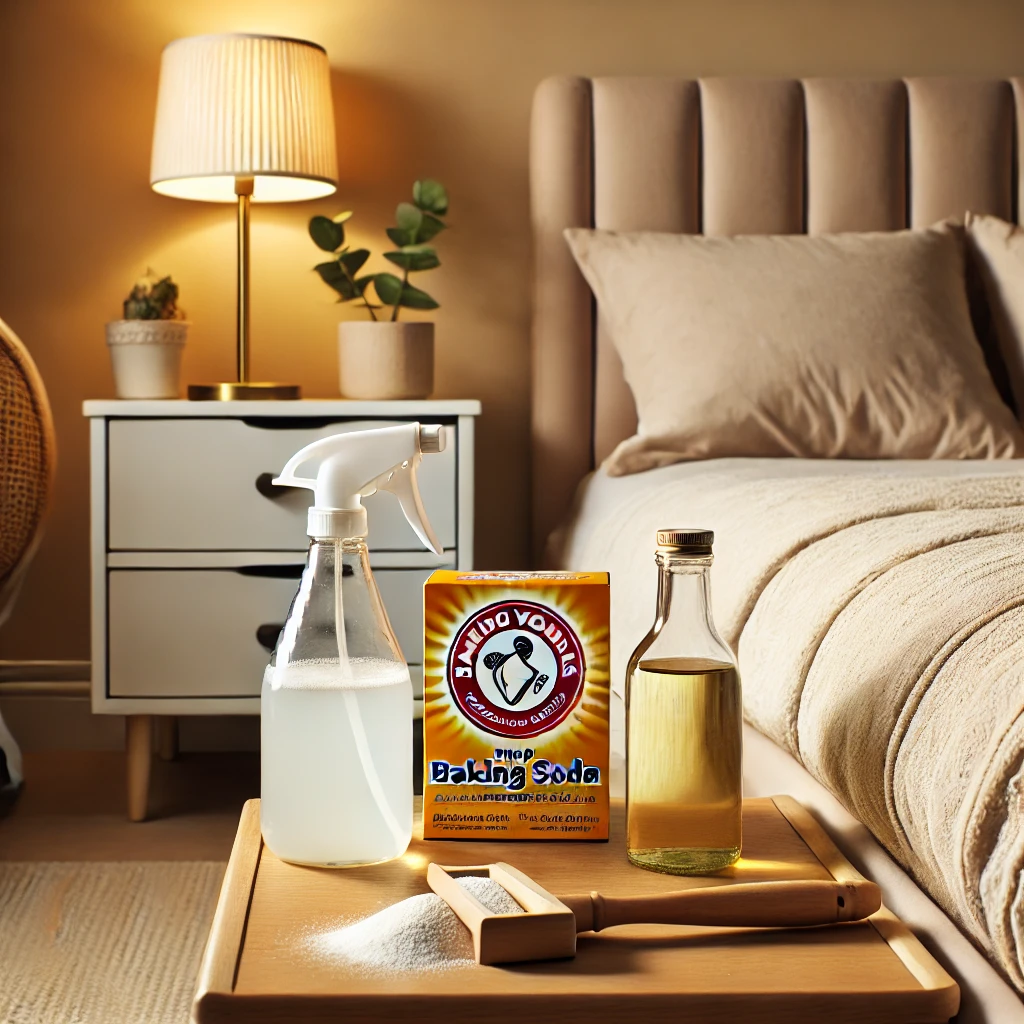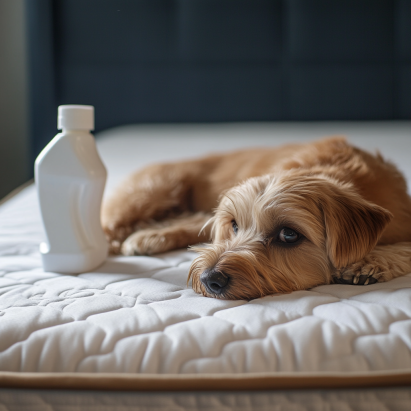How to Clean Peed Mattress Stains Fast (Without Damaging Your Bed)
Accidents happen. Whether it’s potty training, a pet mishap, or a midnight spill, knowing how to
clean peed mattress stains quickly protects your sleep, your health, and your mattress.
This friendly, no-stress guide shows you the safest way to lift urine, remove odors, and prevent future messes.
Key Takeaways: clean peed mattress
- Act fast: blot, treat, and dry to stop odors from setting in.
- Use a simple solution of white vinegar and water, then baking soda to deodorize.
- Choose enzyme cleaners for pet accidents and stubborn smells.
- Dry thoroughly with airflow or sunlight to prevent mold and musty odor.
- Protect your bed with a waterproof cover to avoid the next clean peed mattress emergency.
How to Clean a Peed Mattress: Step-by-Step
1) Strip the bedding right away
Answer first: Remove all linens and start a wash cycle immediately. Hot water (if care labels allow) and a cup of white vinegar help sanitize and reduce odor.
Take off sheets, blankets, and protectors. If your pillows or mattress pad are washable, launder them too. For stain guidance on sheets and covers, see our bedding materials guide for fabric-specific tips.

(Image: place centered at the end of this section.)
2) Blot, don’t rub
Answer first: Press with absorbent towels to pull moisture up; rubbing pushes urine deeper.
Use paper towels or a clean cloth and work from the outside of the spot toward the center. Replace towels as they become damp. This reduces spread and keeps the top layers from soaking through to the core foam. Sleep Foundation also recommends blotting to avoid driving liquid deeper into the bed
(source).
3) Mist a vinegar solution to neutralize
Answer first: Combine equal parts white vinegar and cold water in a spray bottle; lightly mist, wait 10–15 minutes, and blot again.
Vinegar helps break down odor compounds. Keep the area damp, not soaked—especially with memory foam—to protect adhesives and foam structure (care basics).
4) Cover with baking soda to deodorize
Answer first: Sprinkle a generous layer of baking soda over the damp spot and let it sit 8–10 hours.
Baking soda absorbs remaining moisture and odor. Vacuum thoroughly with an upholstery attachment. If any smell remains, repeat the spray-and-baking-soda sequence once more. For stain-specific help, see our stain removal guide.
5) Dry completely with airflow or sunlight
Answer first: Get the mattress totally dry to prevent mildew and lingering smells.
Open windows, use a fan, or place the mattress near indirect sun. Sunlight helps deodorize naturally. Never put sheets back on until the bed is fully dry to the touch. For full hygiene practices, visit Mattress Hygiene & Cleaning.

(Image: place centered at the end of this section.)
How to Clean Dried Urine from a Mattress
Answer first: Rehydrate, treat, and re-deodorize—stubborn dried crystals need a second pass.
- Lightly mist the area with warm water to soften dried crystals.
- Spray with the vinegar solution; wait 15 minutes; blot.
- Apply baking soda for 8–10 hours; vacuum thoroughly.
- Repeat once if any odor remains.
If the smell persists, consider an enzymatic cleaner—especially for foam that has absorbed odor. Sleep Foundation outlines practical steps for urine and other stain types
(stain guide).

(Image: place centered at the end of this section.)
Using Enzyme Cleaners on a Peed Mattress (Especially for Pets)
Why enzymes work on urine
Answer first: Enzyme cleaners digest the proteins and uric acids that cause lingering smells.
That’s why they’re so effective on pet accidents. Always spot test, follow label directions, and avoid mixing with bleach or ammonia. For safer product options, browse the EPA’s Safer Choice database
(EPA Safer Choice products).
How to apply enzymes correctly
Answer first: Lightly saturate the area, give it time to work, then blot and air dry.
Let enzymes dwell as directed so they can break down odor sources. For ongoing issues, consider behavioral training for pets and keep a waterproof protector on the bed. Parachute’s guide explains how to choose and care for protectors (protector guide).
Prevention: Keep Your Mattress Fresh After a Cleanup
Use a waterproof protector
Answer first: A waterproof cover blocks spills from ever reaching your mattress.
Look for a quiet, breathable option and wash it on a schedule. Explore our mattress protector buying guide to pick the right fit.
Build supportive bedtime habits
Answer first: Encourage a bathroom trip before bed and limit late-night fluids.
These small habits reduce the chance of another clean peed mattress situation. If you’re updating sheets for better comfort and easy washing, see our bedding materials guide and atural mattress cleaning tips.
Maintain a regular cleaning rhythm
Answer first: Vacuum the surface, rotate as advised, and freshen occasionally with a light baking-soda sprinkle.
Routine care keeps odors at bay and extends mattress life
(how to clean a mattress). For eco-friendly fabric choices and wash cycles, explore
organic bedding materials and other eco-conscious sheets topics across Cozy Bed Quarters.
Eco-Friendly vs. Conventional Cleaners: What’s Better for Beds?
Performance and safety tradeoffs
Answer first: Many green cleaners work well and reduce exposure to harsh chemicals.
When choosing store-bought options, look for credible certifications. The EPA Safer Choice program verifies products that meet stringent health and environmental criteria
(about Safer Choice). Homemade solutions—vinegar, mild detergent, and baking soda—are also reliable for a clean peed mattress routine.
When to pick enzymes over DIY
Answer first: If the odor lingers after a DIY cycle, use enzymes.
Enzymatic formulas are particularly helpful for pet urine and old stains. They address the actual odor sources rather than masking them. Keep usage light to avoid overwetting foam, and always allow complete drying.
Buyer’s Guide: What to Keep in Your Clean-Up Kit
Essentials for quick response
Answer first: A small caddy keeps everything within arm’s reach when accidents happen.
- White vinegar, empty spray bottle, baking soda, and clean cloths
- Enzyme cleaner (pet-safe, fabric-safe)
- Vacuum with upholstery attachment
- Waterproof mattress protector and extra fitted sheet
Optional helpers that boost results
Answer first: Fans and sunlight speed drying and reduce musty odors.
A gentle garment steamer can help freshen surface fabrics. Charcoal sachets or an open box of baking soda can also absorb lingering odors after you clean peed mattress stains.
FAQ
- What removes urine smell from a mattress best?
- For fresh accidents, vinegar and baking soda work well. For lingering or pet-related odors, use an enzyme cleaner that breaks down odor-causing compounds at the source.
- Is it safe to sleep on a mattress after cleaning pee?
- Yes—after it is fully dry. Trapped moisture can encourage bacteria and mildew. Use airflow or sunlight so the bed dries completely before remaking it.
- How do I clean a peed mattress without vinegar?
- Mix 8 oz hydrogen peroxide, 3 tbsp baking soda, and a few drops of mild dish soap. Lightly mist, blot, and let dry. Test on an inconspicuous area first.
- Should I replace a mattress after it’s been peed on?
- Replacement is usually unnecessary if you treat quickly, deodorize, and dry thoroughly. If odors persist after multiple enzyme treatments or if you notice mold, consider replacement.
Final Thoughts
A clean peed mattress is absolutely achievable with a calm plan: blot, treat, deodorize, and dry.
Keep an enzyme cleaner and protector on hand, and you’ll bounce back from accidents with minimal stress.
For deeper guidance, explore more tips across Cozy Bed Quarters, including
mattress hygiene and natural cleaning.
Related Reading
From Cozy Bed Quarters
- Master Mattress Hygiene and Cleaning
- How to Clean Stains Out of a Mattress
- Mattress Protectors: Benefits & Buying Guide



